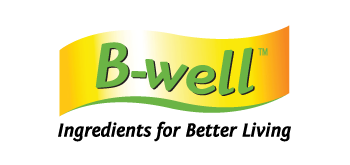Foods for the Hyperactive Human
Having attention deficit hyperactivity disorder (ADHD)and parenting a child with ADHD can be a bit overwhelming, especially with fluctuating energy levels, mood swings associated with side effects of medication and incorrect diet and lifestyle.
What’s become common management for ADHD usually focuses on pharmacologic treatments that include stimulants and other prescription medications. These drugs can be helpful in many cases but the side effect profile for most of the treatments can be problematic. Behavioral interventions are often recommended as the initial treatment for children with ADHD and are often used in combinations with medications. We know that physical activity is critical for growth and development and may help reduce the symptoms for children and adults with ADHD.
Energy enters the body predominantly through the foods we eat. Although diet alone isn’t the driving force behind the multiple behavioral and cognitive symptoms that plague children and adults with ADHD, nor has it been proven to provide a cure for ADHD. Studies show that food definitely influences better response to therapy since our bodies and minds require the correct nutrition to maintain health and boost overall wellbeing and mental capacity. Diets suited for adults and children with ADHD are not specialized except that it allows for a slower, sustainable release of energy, cuts down on additives and includes foods that don’t worsen the condition and are more suitable for concentration.[1]

ADDITIVES: Although heavily speculated, evidence over the past few years has consistently shown that restriction/elimination diets may be effective in reducing the ADHD symptoms, with up to a 30% probability of response. [2] The elimination of processed foods containing additives (like E numbers), particularly colorants and preservatives would improve symptoms -this is especially an area of focus in children as most kiddies processed foods and drinks are major sources of artificial colors in which bright colors are used to make food more attractive, with longer shelf lives. Artificial additives may also interfere with hormones, growth, and development.
Many pre-packaged and processed products contain artificial coloring, flavors and preservatives, including some breakfast cereals, candies, cookies, soft drinks, fruit punches, even some vitamins for children. Correct practice must be established on washing fruits and vegetables before eating as to remove waxes, pesticides and any potential lead – one of the several neurotoxic chemicals that can disrupt brain development, which contribute to neuro-developmental and psychiatric disorders – including ADHD[3].
OMEGA-3: Essential fatty-acids area power force for basic cell functioning, improved overall immunity, and enhanced heart health. Recent studies and literature reviews on the potential for poly-unsaturated fatty acids, in particular, omega-3 fatty acids to modify ADHD symptoms have demonstrated that low circulating concentrations of omega-3 fatty acids are associated with ADHD-and that omega-3 fatty acid supplementation has a similarly small but reliable benefit as the restriction of food additives. [4-5] Over two dozen literature reviews have concluded this after studies were conveyed involving hundreds of children.
Omega-3 may improve attention, focus, motivation, and working memory in children and adults with ADHD, as well as overall brain and heart health. By definition, the body cannot make essential fatty acids, so these nutrients must be consumed in the diet. Some sources of omega-3 fatty acids include :fatty fish (such as salmon, sardines and tuna), B-WELL Canola Oil and Mayonnaise, walnuts, chia seeds, flax seeds and hemp seeds.[4]
MICRONUTRIENTS: Studies have shown a common deficiency/insufficiency of micronutrients-specifically zinc, iron, magnesium, vitamin B6and vitamin D among children and adults with ADHD. [6&7]
Dopamine, the neurotransmitter responsible for executive roles within the brain and body function, of which plays a major role in the motivational component of reward-motivated behavior, also with strong links to ADHD and overall alertness.
Zinc regulates dopamine and may make methylphenidate (the active ingredient found in Ritalin and Concerta) more effective by improving the brain’s response to dopamine, iron is also necessary for making dopamine. Low levels of Zinc have shown to correlate with inattention where low iron levels correlate with cognitive deficits and severe ADHD. Like zinc, magnesium is used to make neurotransmitters involved in attention and concentration and has a calming effect on the brain.
Studies suggest that giving children who have low levels of B vitamins a supplement improved some IQ scores (by 16 points) and reduced aggression and anti-social behavior. “Vitamin B-6 seems to increase the brain’s levels of dopamine, which improves alertness,” says Richard Brown, M.D., author of How to Use Herbs, Nutrients, and Yoga in Mental Health Care.
All three minerals and vitamin B-6 are found in lean meats, poultry, seafood, nuts, soy, whole foods (rice, beans, lentils, grains…), leafy greens (spinach, kale, cabbage, broccoli…)and superfoods like Moringa. While diet is the safest way to increase all mineral levels, a multivitamin/supplement with iron will ensure that you/your child gets the daily reference value (DRV) of these minerals.
As mentioned earlier, even children’s vitamins (as well as children’s medications) can be a source of additives. Juice drinks are also a major source of food coloring exposure, so these drinks should be substituted with 100% orange juice (one of the few juices that does not contain additives and has options fortified with calcium and/or vitamin D) or with juices/smoothies made together at home with fresh fruits and veg.
One treatment that may help in all these areas is a whole food plant-based diet with healthful unsaturated fats. This style of eating is based on whole foods that have minimal to no processing, and cut out meat from commercial farming in order to decrease other hormones and toxins that may disrupt body processors.
Beans, legumes, vegetables, whole grains, fruit, nuts and seeds are the foods that provide the macro and micronutrients that promote health. Dr. Michael Greger, nutritional expert, researcher and founder of nutritionfacts.org states these foods contain not only the essential vitamins and minerals, but also hundreds of naturally occurring phytonutrients that may protect against cancer, heart disease, osteoporosis, and other chronic health conditions.
Children and Adults with ADHD are recommended to go easy on sugary foods, unhealthy saturated and trans fats, rapidly digested carbohydrates(like breads, pastas), and fast food; and balance healthy eating with plenty of physical activity and meditative techniques for inner calm.

Tips that may support the process:
•Eat balanced meals. Try to include a mix of vegetables, whole grains, protein, and omega-3 fatty acids in most meals.
•Schedule regular meal and snack times, as routine is important for those with ADHD.
•Do not skip meals, as this could lead to blood sugar crashes and excessive junk food consumption.
•Keep plenty of healthful foods on hand for a quick snack, such as fruits, nuts, chopped vegetables, healthy dips (like hummus, tahini).
•Speak to a doctor about taking a multivitamin and multimineral supplement, which may be especially helpful for picky eaters and people with nutrient deficiencies. Opt for ones that are free of colorants and extra flavorings.
•Check all ingredient labels on food packaging, and avoid foods that contain artificial additives and high amounts of sugar.
•Shop around the perimeter of the grocery store, which tends to contain the most minimally processed whole foods or get familiar with your local fruit and veg vendors, farmstalls or organic markets that sell local, seasonal produce.
•Try to cut back on quick-fix foods and ones that are made with processed ingredients, like pastas, breads, pastries, pre-packaged meals.
•Have fun with food and get everyone involved with the preparation process, especially children that are picky. This will empower and encourage more active participation, even in the eating process.
[1] The Influence of Diet on ADHD, By Kathleen F. Holton, PhD, MPH, Jeanette M. Johnstone, PhD, Diane D. Stadler, PhD, RD, Joel T. Nigg, PhD
[2] Nigg JT, Holton K. Restriction and elimination diets in ADHD treatment. Child Adoles Psychiat Clin N Am. 2014;23:937-953
[3] https://www.psychiatrictimes.com/special-reports/understanding-link-between-lead-toxicity-and-adhd
[3] Lanphear BP. The impact of toxins on the developing brain. Annu Rev Public Health. 2015;36:211-230
.[4] Hawkey E, Nigg JT. Omega-3 fatty acid and ADHD: blood level analysis and meta-analytic extension of supplementation trials.Clin Psychol Rev. 2014;34: 496-505.
[4.] Sonuga-Barke EJ, Brandeis D, Cortese S, et al. Nonpharmacological interventions for ADHD: systematic review and meta-analyses of randomized controlled trials of dietary and psychological treatments. Am J Psychiatry. 2013;170:275-289.
[5] Bloch MH, Hannestad J. Omega-3 fatty acids for the treatment of depression: systematic review and meta-analysis. Mol Psychiatry. 2012;17:1272-1282.
[6] Woo HD, Kim DW, Hong YS, et al. Dietary patterns in children with attention deficit/hyperactivity disorder (ADHD).Nutrients. 2014;6:1539-1553.
[7] Zhou F, Wu F, Zou S, et al. Dietary, nutrient patterns and blood essential elements in Chinese children with ADHD. Nutrients. 2016;8:pii.

